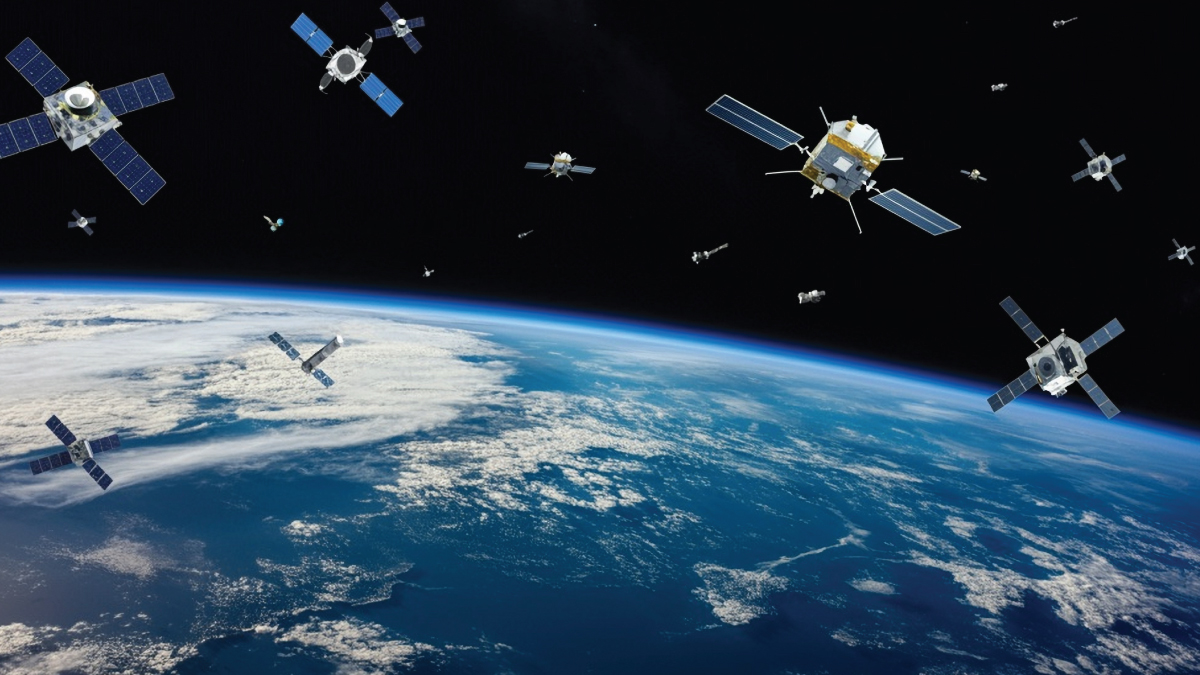
With mega-constellations, the number of satellites in LEO is rapidly rising—as well as the number of threats in space. Soon, artificial intelligence will be a crucial part of Space Domain Awareness (SDA), which requires satellite operators to sort through an ocean of data to understand what’s happening in orbit.
To address this, Audrey Schaffer, VP of Strategy and Policy at Slingshot Aerospace, described the role of AI for building better Space Domain Awareness. Listen to the full podcast, or read our top four takeaways below.
Takeaway 1: Data fusion assembles multiple data sources together to get more accurate information.
By using AI tools to fuse different data sources together, operators can “get actionable information on operationally relevant timelines,” Schaffer explained. “What we’re seeing is better exploitation of the data sources that we have.”
Data fusion brings together multiple types of data to get a better picture of an object’s identity, positioning, movements, behavior, or context. Schaffer compared this to Google Maps, a platform that integrates a variety of disparate sources of information, including weather, speed cameras, restaurant recommendations, and traffic. In a similar way, data fusion would allow satellite operators to receive many types of information in a single place.
“It’s really all of these tools being brought together and putting information on a single pane of glass that makes the integration of the data so powerful,” Schaffer said. Once all of that data is in one place, modeling and simulation tools can be used to allow the operator to visualize “what’s happening in the space domain, beyond just the math.”
Takeaway 2: AI tools can identify outlier behavior in mega-constellations.
AI tools can also be trained to identify outliers within a constellation and supply possible explanations. Slingshot, for example, has a tool called Agatha, which looks at mega-constellations and identifies any minute differences in satellite behavior among the thousands of satellites in the constellation. “That’s a task that would be incredibly difficult for a human to perform, not just because of the amount of data that they would have to sift through, but because some of these differences are so small that a human wouldn’t necessarily recognize them,” Schaffer said.
AI can also help an operator differentiate between intentional and unintentional interference, or to understand the changes in an object’s positioning over time. While most objects follow predictable orbits, sudden or unexpected maneuvers can be hard to predict or track.
By relegating this work to AI, the human analyst is freed up to focus on the more complicated “investigative reporting,” as Schaffer described it. “This is doing what humans do best—the additional reasoning, the additional knowledge to run it down and figure out what is actually at issue.”
Takeaway 3: AI can support better satellite threat intelligence and awareness.
This kind of technology is especially useful in satellite threat awareness and identifying potential threats. Several years ago, suspected Russian spy satellite Luch initiated an unexpected maneuver. An ML tool recognized the movement, predicted where it was going to be based on physics and orbital dynamics, and where it was going to stop and what its next target would be.
Maneuvers can make it hard to track satellites. To remedy this, Slingshot has begun building Raptor, an SDA tool that helps operators locate individual satellites. “We are building a database of unique identifier signatures for each satellite,” Schaffer said. “We call them satellite fingerprints.” If an operator loses custody of their satellite, but later locates an object in the vicinity, this database would allow them to rapidly identify if this new object is the one that they lost.
Takeaway 4: Simulated data can be used to train AI.
AI has to be trained, and it needs to be given data to be trained on. Unfortunately, there’s not a lot of good space data. “The beginning of the space age was more than seventy years ago,” Schaffer explained. “We have data, but what we don’t have are robust data sets on the newer behaviors that we’re seeing in space.”
These new behaviors include mega-constellations, dynamic space operations, and satellites that can be moved from one orbit to another. To teach AI how to understand these behaviors, simulated data must be created. By generating decades worth of synthetic data, training AI on it, and then testing the results against real world applications, Slingshot has shown that this can be a successful approach.
While good SDA capabilities can help us understand what is happening in space, the next step will be knowing what to do with it. These next-generation capabilities could include generative AI that evaluates different courses of action and make operational recommendations. “It’s one thing to have an awareness that that’s happening,” Schaffer said. “But it’s another thing to be able to make recommendations about what to do.”
For more on policy, NGSO deployments and military applications, listen to the full podcast episode.
Explore More:
How to Train Your Teleport: AI Fuels Intelligent Ground Systems
Podcast: AI Hallucinations, Blockchain and Extracting Intent
Is AI the Key to Greater Situational Awareness in GEO?
